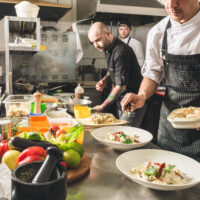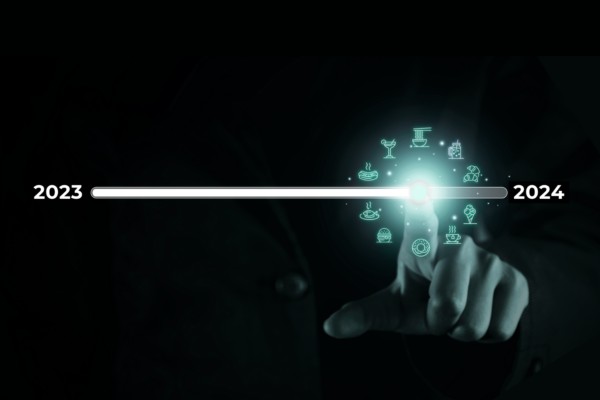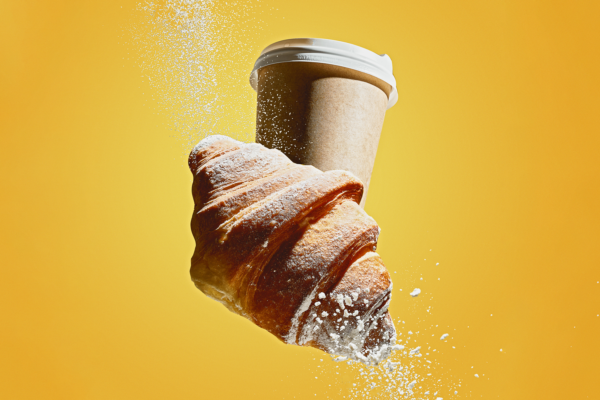Menu prices across the U.S. restaurants rose an average of 6.3% last year, accelerating throughout 2022 as industry challenges, from rising costs for everything from ingredients to labor, rose even more sharply.
But restaurants and other food businesses rarely increased prices across the board, and the increases varied significantly at times from one type of restaurant to another. Knowing the data details on where and how foodservice prices went up can give consumers a leg up in knowing where to find the best deals in an era of record-breaking inflation.
Not all price increases were created equal
Restaurants on the whole were slow to raise prices last year, even as broader inflation rose sharply, fearing that they may chase away customers just at the time when more were coming back after the pandemic. There was one key difference: The top 500 chains raised prices more aggressively than smaller chains or independent restaurants, which make up a bigger piece of the total U.S. restaurant industry. The top 500 chains made up about one-third (32.7%) of total industry units last year, but comprised nearly two-thirds (64.3%) of total sales, according to Datassential’s Firefly 500+ report.
Here’s how menu prices increased overall last year:
| Q1 | +5.9% |
| Q2 | +6.0% |
| Q3 | +6.4% |
| Q4 | +6.8% |
And here’s how the biggest restaurant chains raised prices as compared with all other restaurants:
| Top 500 Restaurants | All Other Restaurants | |
| Q1 | 6.3% | 5.9% |
| Q2 | 9.1% | 5.4% |
| Q3 | 8.8% | 6.0% |
| Q4 | 8.7% | 6.5% |
Smaller chains and independent operators are expected to close the gap in the months ahead, accelerating price increases as the biggest chains have already done.
By segment, price increases were far more significant in the fast casual and QSR segments, with both over 8 percent, while fine dining had the least, at 3.6%.

There are several reasons for this: Fast casual and QSR restaurants tend to be among the most familiar to customers, and they’re often part of a ritual – whether it’s picking up lunch via an app or snaking through a drive-thru at dinner time. Convenience, speed and relatively low prices keep these restaurants somewhat immune to any significant backlash to higher prices.
The ‘Psychology of Price’
And speaking of those prices, restaurants with lower menu prices overall – like fast-food, for example – are able to raise prices at a steeper rate because even a sharp percentage price increase doesn’t do much to change a price. If there’s an item that costs $1 on the menu, for example, a 5% increase only takes the price to $1.05 – a change few consumers will sneeze at. If you’re in a fine dining restaurant with a $100 steak – consumers are far more likely to steer clear if that steak now costs $110.
It also has a bit to do with the “psychology of price” – the less an item costs, the more an operator will tend to raise the price. Going back to that $1 menu item, the price is much more likely to be raised to $1.25, for example, than it is to $1.05, allowing for an operator to recoup much more price the less expensive an item is.
That rings true across the industry: menu items under $1 have risen 16.7%, items priced between $1 and $2 have increased by 11.8%, and items over $30 have only seen an increase of +1.2%.
Wings vs. ‘Fancy’ Coffee
If you want to know how prices have increased on menus by item type, look no further than chicken wings and cappuccinos.
Chicken wings, which were the source of supply shortages, had among the highest percentage price increases last year, as extensive media coverage of the supply issues drove consumer acceptance of higher prices. Still, there were two categories that saw a larger percentage increase: AM Bakery topped the list, as breakfast treats like croissants and muffins increased by the highest percentage – but these items tend to be cheaper than most and like we explained above, consumers tend to stomach a bigger percentage price increase on less expensive items.
Second-highest on the list was condiments, perhaps a surprising move for an item that most consumers would consider optional. But many restaurateurs started charging for things like salad dressing and dipping sauce during the pandemic, and found consumers didn’t balk with a price increase on their favorite hot mustard.
Beyond wings, other protein-heavy dishes tend to increase by the largest percentage. Meanwhile, specialty coffees, teas and cakes – had among the lowest percentage price increases. Those items tend to be add-ons that can increase an average check – making them critical revenue streams for many restaurateurs, and perhaps too important to risk alienating customers by significantly upping the price.
For consumers looking for a relative bargain, pizza, nachos and hot sandwiches have all had the lowest percentage price increases, and may be good choices for those looking to save a few dollars.
In with the expensive & new
When it comes to new vs. old menu items, new menu items tend to be priced higher than items that have been on the menu for a while. On average, new items are priced 10.4% higher than are legacy menu items. That’s at least in part because operators are hesitant to raise prices on menu items that customers already know and love, and make up the difference on new items that customers – particularly new ones – may be more willing to try.
Overall, 89.2% of newer items are priced higher. That difference is most stark when comparing beef entrees: New items carry an average price of $26.26, while legacy menu items cost an average of $21.90.
But there’s also a huge value placed by consumers on innovative food they feel like they can’t get anywhere else. And that will be the key for operators going forward – innovation will offer permission to raise prices if it’s something consumers see as unique and exciting.
In a survey last year, almost two-thirds (63%) of consumers said they bought their last limited-time offer (LTO) on impulse, and 42% said they were motivated to choose a new item over a menu standby simply because they felt like trying something new – as opposed to getting lured in by advertising or some favorite ingredients. The categories that consumers said they’d prefer to try something new in? Dessert, and appetizer/side.
So when it comes to making the difficult choice to raise prices, ensuring that customers have something new and exciting to try goes a long way to ease the pain in their wallets.
_____________________________________________________________
Samantha Des Jardins is a Content & Marketing Manager at Datassential.
If you would like to learn more about Datassential’s suite of food and beverage intelligence solutions, reach out to us here.
For media or press inquiries, email media@datassential.com.







